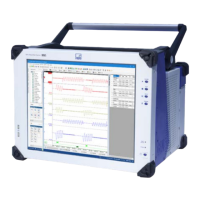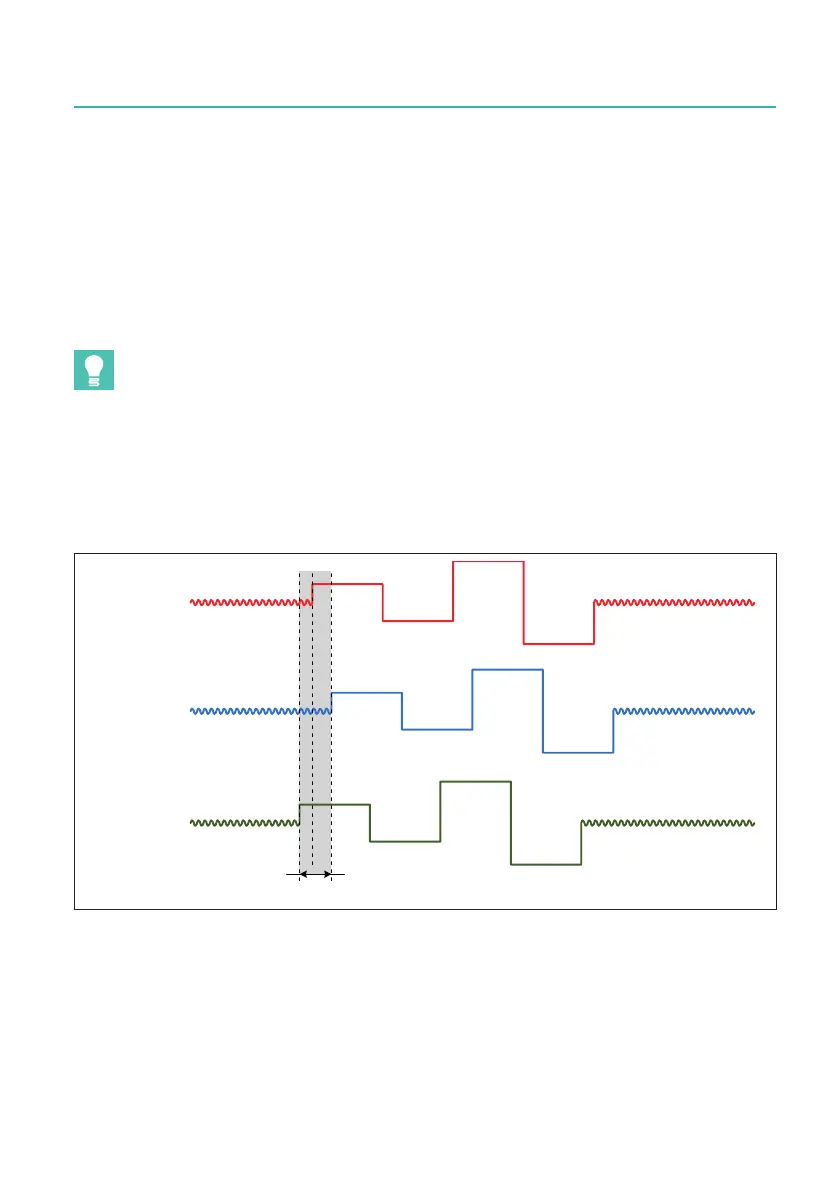GEN7iB
275
GEN series SYNCHRONIZATION METHODS
GEN series SYNCHRONIZATION METHODS
14
Aquickandeasyvericationmethodusesasquarewaveandcomparestherising
edge of the square wave. Make sure to use a square wave signal with a time period
that is longer than the expected phase match. This avoids larger phase errors being
missed, as the different subsequent rising edges cannot be separated from each
other.Forexample,asquarewaveof100kHz(10μsperiodtime)andaphaseshiftof
10μswouldshowa100%synchronizedtrace.Loweringthesquarewavefrequencyto
10kHzwouldsuddenlyshowthe10μsphaseerror.Whenindoubt,lowerthefrequency
and measure again.
As a square wave has an instantaneous transition by denition, it is not possible to estab-
lish phase shifts smaller than a single sample period. A complex but more accurate phase
shift measurement uses a sine wave with a period time that is ten times lower than the
specied phase shift. Using a computed best t sine wave on both signals allows for the
extraction of the sine waves phase at point X of each trace. The difference between each
calculated sine wave’s phase is the phase shift between channels.
0DLQIUDPH
0DLQIUDPH
0DLQIUDPH1
Fig. 14.1 Determining phase shift

